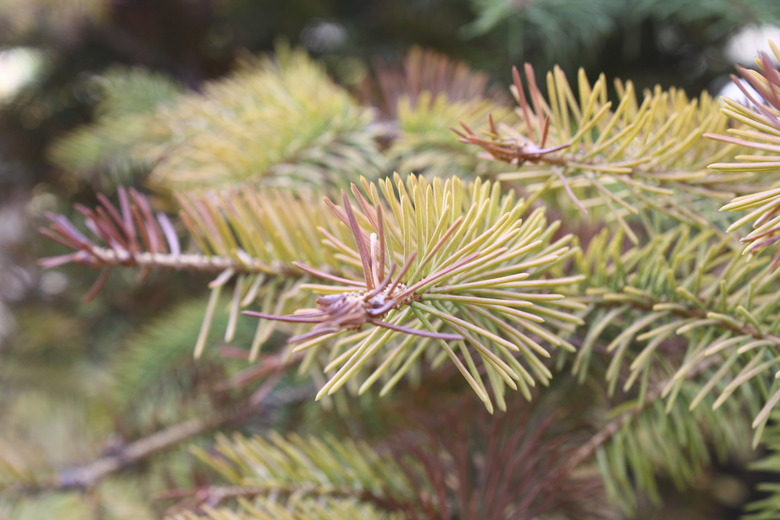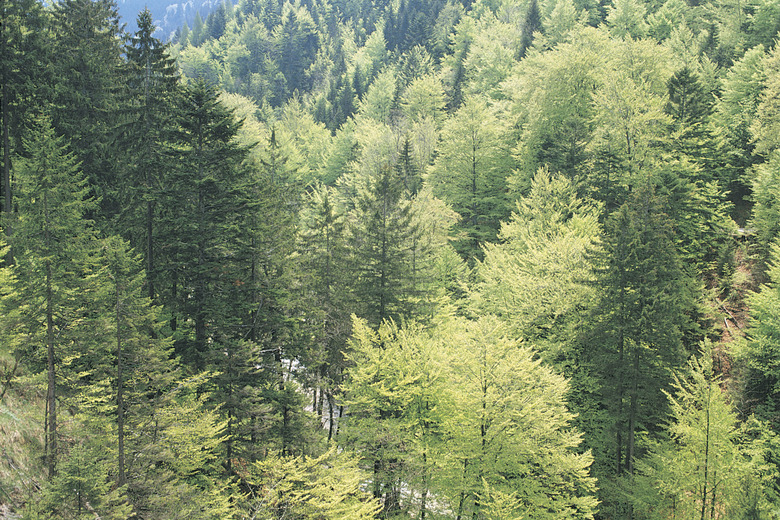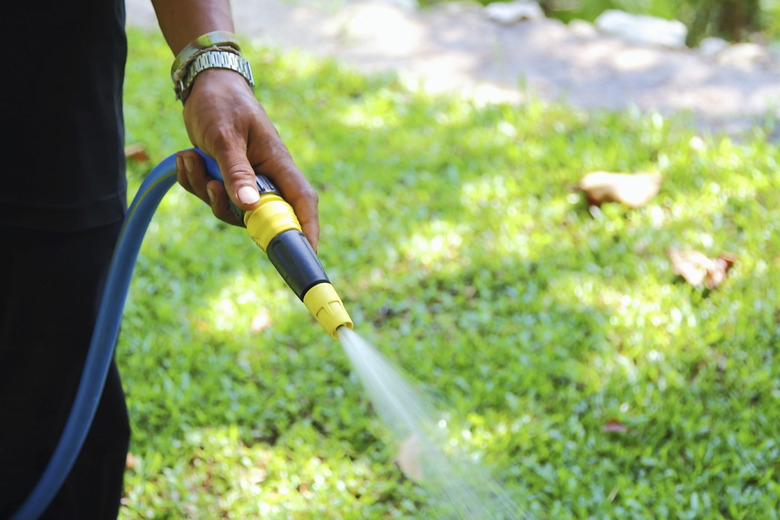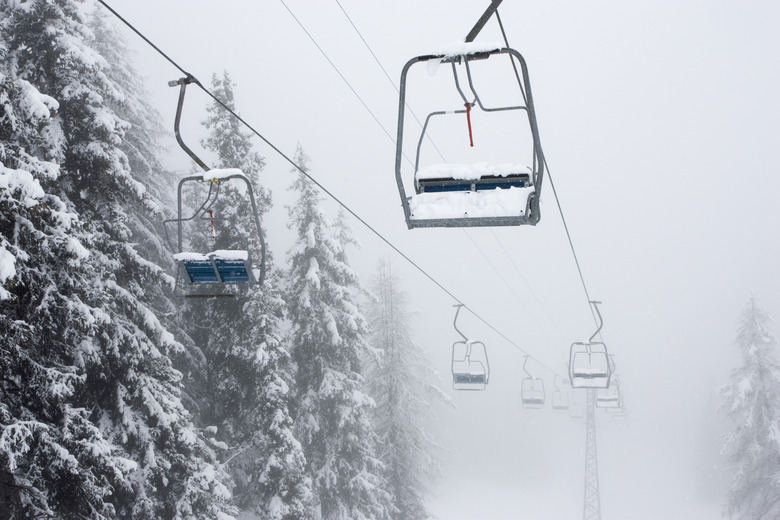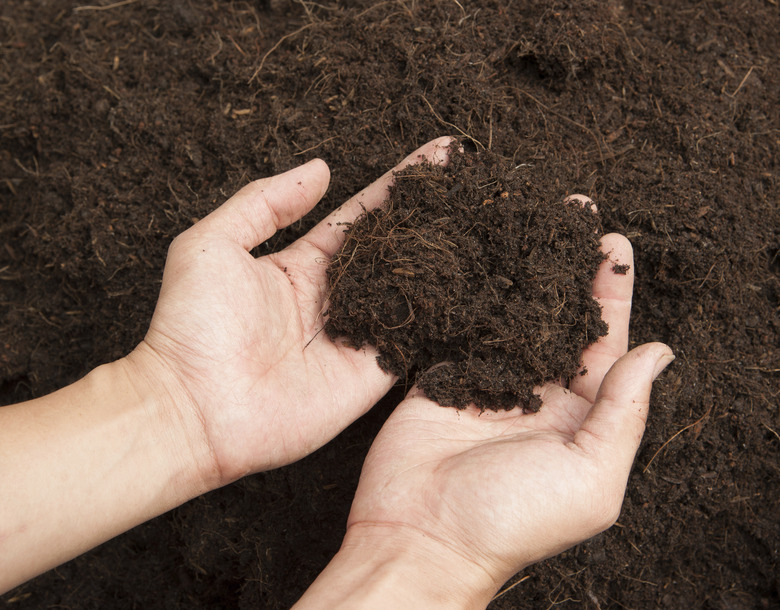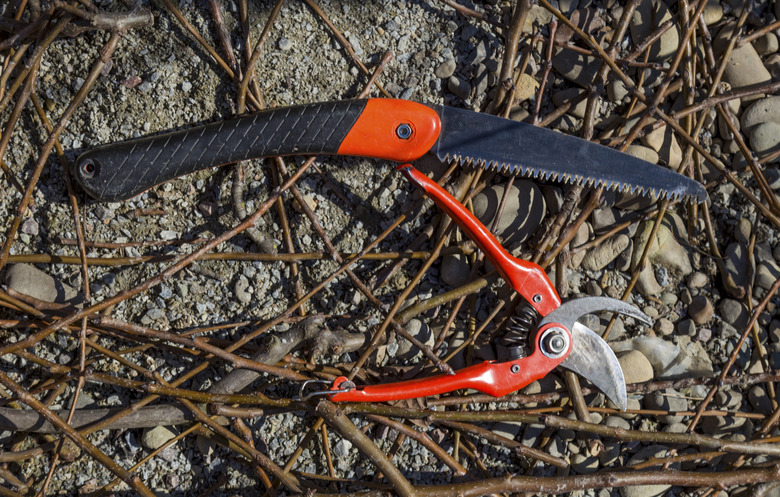Why Do Evergreens Turn Yellow?
When your evergreen is looking not-so-green, it's easy to become alarmed with thoughts of disease or insect infestation. Whether your evergreens are broad-leaved or needled, yellow foliage can be a cause for concern — or may be part of a normal life cycle. The key lies in examining where on the plant the yellowing occurs and whether additional symptoms are present.
The Circle of Life
Much like pets, some needle and broad-leaved evergreens shed once a year, especially in younger trees. In the case of evergreen trees and shrubs, autumn is often the time for this cyclical dropping of needles, but it varies by species. That process begins with a yellowing on the inner needles, although the discoloration may have a more brownish cast. These needles eventually drop, with new needles emerging in the warmer weather. So stay calm if you see the interior of your needled evergreen turn yellow. The interior foliage is also more likely than the tips to turn yellow and drop in broad-leaved evergreens when normal cycles are the explanation.
Pests in the Pines
Spider mites are capable of inflicting major damage on needled evergreens. When trees and shrubs turn yellow in summer months — especially if the discoloration starts out as light specks on individual needles — mites are a likely culprit. The tiny pests thrive in hot, dry conditions. Webbing between branches can confirm the mite infestation, as can shaking a branch over a piece of light paper. Look for tiny, eight-legged creatures of various colors, depending on the species of your tree. Blasting trees with water and soaking the surrounding soil not only dislodges the mites but helps correct the under-watering that contributes to mite populations.
Weathering the Storms
Weather fluctuations can take their toll on needled evergreens. The effect of severe drought during the summer, or windy, brutal winter storms, can all eventually show themselves as yellowing needles. Watering the trees regularly during the growing season mitigates most problems. Proper irrigation is obviously important during hot, dry weather. But it also helps to keep the trees well-watered in the fall because water-stressed trees are more prone to winter damage.
Underfed Evergreens
A manganese deficiency can cause yellowing foliage in evergreen shrubs such as plumbago (Plumbago auriculata, U.S. Department of Agriculture plant hardiness zones 8B to 11). Sending a sample of soil, taken from near where the shrub is growing, to your local extension service can confirm a deficiency in the mineral. To correct the problem, work manganese sulfate into the soil around the shrubs at a rate of about 1/4 pound per shrub.
Fungal Blights
Fungal infections can also cause yellowing in evergreens, especially needled types. Among the fungal diseases that can cause yellowing are the groups known as tip blights and needlecasts. As the name suggests, tip blight attacks the ends of branches, which can eventually kill the whole tree. Needlecast discolorations show in bands along the whole branch and can also cause massive needle loss or the death of the plant. To prevent or treat yellowing due to fungal disease, prune trees that are too close together to promote air circulation, and water when rainfall is low. For tip blight, pruning away the yellowing tips can stop the spread of the disease. Remove infected lower branches to keep the diseases from spreading up the tree.
References
- Missouri Botanical Garden: Top 10 Problems of Needled Everygreen Trees in the Lower Midwest
- Missouri Botanical Garden: Needlecasts and Evergreen Tip Blights
- Horticulture Magazine: Needle Loss on Evergreens
- Floridata: Plumbago Auriculata
- University of Illinois Extension: Evergreen Needles Turn Yellow
